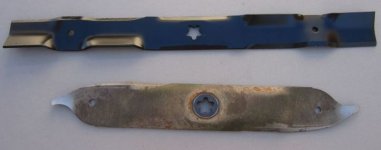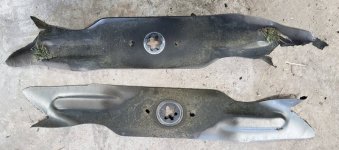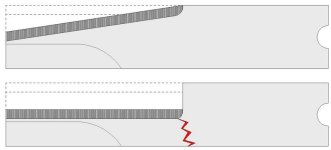If you live in an area where the soil is sandy then to me that's a whole 'nother animal. Over the years I've seen pics of the effects sand has on blades and it's just crazy the way the metal gets eaten away. If that's your situation then I would just sharpen regularly and then recycle them long before they look anything like the ones in these pics....Attention sharpeners...
No answers!?!?!


If you don't have sandy soil and are only cutting grass and not hitting a bunch of foreign objects then your blades should last years with regular sharpening, IMO. I have blades I've sharpened dozens of times and there's still plenty of life left in them. The pic below is taken from the Magna-Matic sharpener manual, and shows their opinion on the right and wrong way to sharpen a blade over the course of its life. I sharpened a blade last year that was getting close to looking like the bottom one. I showed the guy the picture and told him to get another set of blades. Although they don't explicitly say it, I believe Magna-Matic believes that you can sharpen the edge of a blade almost back to where the sail of the blade starts to curve upward. You can see that in the pic below as well. That seems to make sense to me.

